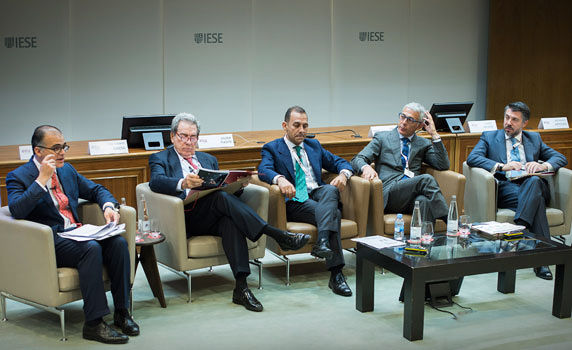
Despite the crisis, 31 percent of Spain’s businesses have reported a rise in sales over the past eight years. And only 4.6 percent are still seeing a downward trend.
These were among the key conclusions of the 6th annual survey of corporate sales networks in Spain 2015, "The Future of Sales Networks: Towards a New Sales Horizon."
The survey findings were presented to 350 companies by professors Cosimo Chiesa and Julián Villanueva at IESE Madrid at the 8th Sales and Marketing Officers Meeting this month.
And the data coincides with what Spanish companies are reporting: Although uncertainty remains and many sectors are still far from recovery, we seem to be over the worst of the crisis.
While delegates welcomed this news, they nonetheless expressed concern about elements within the business panorama that must be improved. Sales forces in particular were singled out as an area for immediate improvement.
A number of significant trends in sales were identified as areas to keep on the radar.
Future Trends in Sales: The Customer Rules
"We’ve gone from a product-centric to a customer-centric sales strategy," said Sergio Escorial, director of marketing strategy for Deutsche Bank. This trend has gained considerable traction in areas such as the pharmaceutical industry and represents one of the greatest challenges in marketing strategy, he added.
Ernest Quingles, managing director of Epson Ibérica, described the customer as "the focus of our efforts," and insisted on the importance of good business intelligence when interacting with customers.
"It's our first priority, because it helps us optimize resources and facilitates decision making," he said.
Channels, Channels and More Channels
While your direct sales force will continue to be one of the main channels for reaching customers, multichannel selling —internet and social networks, the various media platforms for advertising, including blogs — is set to expand significantly.
In this environment, customers will have new touchpoints for obtaining information. They will require after-sales services and will also be able to buy products and services.
José Manuel Inchausti, CEO of Mapfre Iberia, explained that the insurance carrier links the typology of its different customers to each of the channels available to the company: these include bancassurance, broker channel, banking/insurance channel, life and health, and agriculture, he said.
Even So, the Internet Won’t Replace the Salesman…
Despite the unstoppable rise of digital media, the role of salesperson will not disappear.
The Internet will provide companies with another resource, increase the effectiveness of visits and reduce sales costs, but it will not replace the human touch. "Technology is a medium, a facilitator although they can never replace human empathy," said Javier Pijoan, a senior executive at Heineken International.
That said, the role of the salesperson is set to change radically across a number of sectors, with the support of technology. "The salesperson of the future will have to sell less product and more solutions."
Analytics and Digital Processes
With the digital revolution at full throttle, data and information systems are essential to competing successfully.
According to Sergio Escorial, analysis of customer banking data (e.g., expenses, income, credit card usage, tax payments) offers valuable information for identifying users' needs.
"As a result of this analysis, we've seen a 25 percent increase in the number of customers over the past few years," he said.
Keeping Corporate Reputation
Front of Mind At times of financial crisis there is heightened sensitivity to issues like corruption. And this too has an impact on sales.
Delegates agreed that the global rise of social networks has had unprecedented impact on corporate reputation; a phenomenon that affects companies’ client bases – and their ability to attract and retain top sales talent.
If They Aren’t Motivated, They Won’t Sell
"It is vital for our sales force to be motivated. That is how we achieve a business model and a sustainable and successful organization for the long haul," said Sergio Duque, CEO of Ibérica Luxottica.
"Motivation is something that can be created naturally in the company's everyday processes."
Senior executive at Sage Spain, Susana Hidalgo, agreed: "There are many tools for motivation that do not require any investment yet have a very high yield. The key is for the steering committee to be convinced of what it does, and generate enough dialogue to be able to carry out the processes of change."
Arturo Molinero, HR director of Carrefour Spain, cited stats that indicate that absenteeism is directly tied to motivation. He shared the example of motivation methods used in his department (cultural and sporting activities, competitions, etc., which largely take place outside the workspace) that have reduced the company's absenteeism rate to three percent.
The bottom line is that without motivation, it’s impossible to sell anything.
"To motivate your sales team you need to foster a sense of belonging to the company," said José Manuel Inchausti. And this sense of belonging, he said, is built on proactivity and values: good policies on compensation, engaging incentives, training plans and transparency in communication."